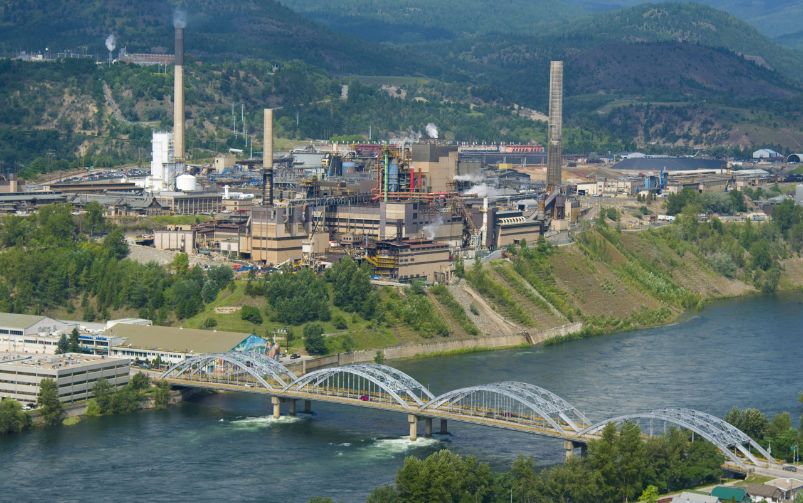Leaders gathered at the 2025 G7 summit in Kananaskis, Alberta, on June 16. From left: European Council President António Costa, Prime Minister of Japan Shigeru Ishiba, Prime Minister of Italy Giorgia Meloni, President of France Emmanuel Macron, Prime Minister of Canada Mark Carney, U.S. President Donald Trump, Prime Minister of the United Kingdom Keir Starmer, Chancellor of Germany Friedrich Merz and President of the European Commission Ursula von der Leyen. Courtesy of the Government of Canada.
Welcome back to your weekly mining news recap, where we catch you up on some of the news you may have missed. This week’s headlines include funding to support several Canadian companies advancing mining technologies, Barrick’s Loulo-Gounkoto complex being placed under court-appointed administration, and the Strange Lake project receiving financial support.
A slow ramp‑up at its Greenstone gold mine in Ontario has led Equinox Gold to reduce the mine’s initial 2025 production estimate from 300,000 to 350,000 ounces down to 220,000 to 260,000 ounces, citing problems with equipment availability that have delayed access to higher-grade ore. Meanwhile, Equinox completed its merger with Calibre Mining on Tuesday, creating a combined company focused on the Americas. When the Greenstone mine and the Valentine mine—the latter of which is expecting first gold later this year—reach nameplate capacity, Equinox will become the second largest gold producer in Canada.
The B.C. government has granted an environmental assessment certificate for the extension of Teck’s Highland Valley Copper mine, located near Logan Lake, which will extend the mine life from 2028 to 2043. The extension is anticipated to yield around 900 million additional tonnes of ore and roughly two million additional tonnes of copper. The expansion would also add 200 permanent jobs, as well as up to 1,250 jobs during construction.
G7 leaders have provisionally agreed to create a plan to secure global supply chains for critical minerals like lithium and rare earth elements, reducing reliance on China, as reported by The Globe and Mail. The plan includes setting standards for the critical minerals market, providing funding for new mines and processing facilities, as well as increasing investment in mining, processing and infrastructure projects in allied developing nations, using funding from export credit agencies and multilateral institutions.
Sudbury’s Mining Innovation Commercialization Accelerator (MICA) program is awarding $4.6 million to support 20 companies developing mining technologies aimed at reducing greenhouse gas emissions, advancing automation and more, as reported by Northern Ontario Business. This fourth funding round supports small and medium enterprises across Canada, including B.C.-headquartered enterprises MineSense Technologies and Arca Climate Technologies.
On Monday, a Malian judge placed Barrick’s Loulo‑Gounkoto gold complex under provisional administration for six months, with the goal of reopening the mine amid a long‑running dispute between the company and the military government, as reported by Reuters. Barrick intends to challenge the ruling. The ongoing dispute includes suspended gold exports, detained employees and an unresolved tax claim. Barrick continues to pursue international arbitration.
Quebec-based rare earth developer Torngat Metals has received a combined total of $165 million from Export Development Canada and the Canada Infrastructure Bank to advance the next phase of its Strange Lake project in Nunavik, as reported by Canadian Mining Journal. The funding will back pre-construction activities, including engineering as well as the environmental assessments required for submitting permit applications for project infrastructure.
Critical Metals Corp. has been offered a letter of interest from the U.S. Export-Import Bank (EXIM) for a loan of up to US$120 million to support its Tanbreez rare earths project in Greenland, as reported by Reuters. Subject to final approval, this would mark the Trump administration’s first overseas mining investment and would strengthen U.S. access to critical minerals, reducing dependence on China. The estimated capex required to bring the project to initial commercial production is US$290 million, and the project is expected to produce 85,000 tonnes of rare earth concentrate annually. If received, the EXIM loan would support technical work and help achieve the goal of starting production by 2026.
Hudbay Minerals has resumed operations in Snow Lake, Manitoba, after evacuation orders were lifted on June 14. No damage occurred to its Snow Lake or Flin Flon facilities. Mining at the Lalor gold-zinc-copper-silver mine has restarted. Additionally, milling at the company’s New Britannia gold mill is expected to reach full production this week.
Major mining companies in Canada are investing heavily to increase women’s participation in the industry, which reached a modest record-19 per cent in February 2025, as reported by Dinah Zeldin in the May issue of CIM Magazine. While progress is steady in corporate roles, female representation in trades and production remains low. Major companies like BHP, Rio Tinto and Teck Resources are setting targets and launching programs to attract and retain women. However, cultural barriers, safety concerns and retention challenges persist, requiring deeper efforts to transform workplace inclusivity.
Although modular construction is gaining traction in mining for its potential to shorten project timelines and improve safety, it requires considerable upfront investment and poses logistical challenges, argued Matthew Hallett, a specialist engineer civil/structural at Cementation Canada Inc., in the May issue of CIM Magazine. Key benefits include off-site assembly and minimized underground construction hazards through surface assembly of large modules, which can be particularly valuable for challenging areas like mine shafts. However, success depends on careful planning, assessing the balance between extra costs and schedule savings, and risk management.
If you’ve got feedback, please take just a few minutes to complete our reader survey. This will help guide what we cover, how we deliver it and what inspires our next steps. And naturally, helping us with our next steps earns you a chance of winning a pair of CIM Magazine socks (and other great prizes).
You can always reach us at editor@cim.org. You can also join the conversation on our Facebook, Twitter, LinkedIn or Instagram pages.




